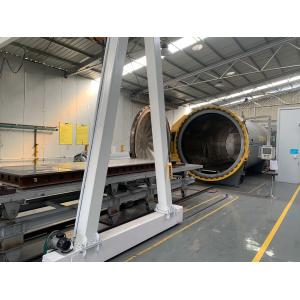

Add to Cart
Development Trends and Future Prospects of Composite Autoclave Technology
The development trends of Composite Autoclave technology are as
follows:
1. Automation: With the advancement of technology, there is a
growing trend towards automation in Composite Autoclave technology.
This includes the use of advanced control systems, robotics, and
artificial intelligence to improve efficiency and productivity.
2. Energy efficiency: There is an increasing emphasis on energy
efficiency in Composite Autoclave technology. This includes the use
of energy-saving heating systems, insulation materials, and heat
recovery technologies to reduce energy consumption and minimize
environmental impact.
3. Material advancements: There is a continuous focus on the
development of new materials and composites that can be effectively
processed using Composite Autoclave technology. This includes the
use of lightweight and high-strength materials, as well as the
integration of smart materials with unique properties.
4. Process optimization: There is a growing emphasis on process
optimization in Composite Autoclave technology. This includes the
use of advanced modeling and simulation techniques to optimize
process parameters, reduce cycle times, and improve product
quality.
5. Integration with digital technologies: There is an increasing
trend towards the integration of Composite Autoclave technology
with digital technologies such as the Internet of Things (IoT),
cloud computing, and big data analytics. This enables real-time
monitoring, remote control, and predictive maintenance of Composite
Autoclave systems.
6. Customization and flexibility: There is a growing demand for
customization and flexibility in Composite Autoclave technology.
This includes the ability to easily adapt to different product
requirements, change production parameters, and accommodate various
sizes and shapes of materials.
Overall, the development trends in Composite Autoclave technology
are focused on automation, energy efficiency, material
advancements, process optimization, integration with digital
technologies, and customization. These trends aim to enhance
productivity, reduce energy consumption, improve product quality,
and provide greater flexibility in the manufacturing process.
